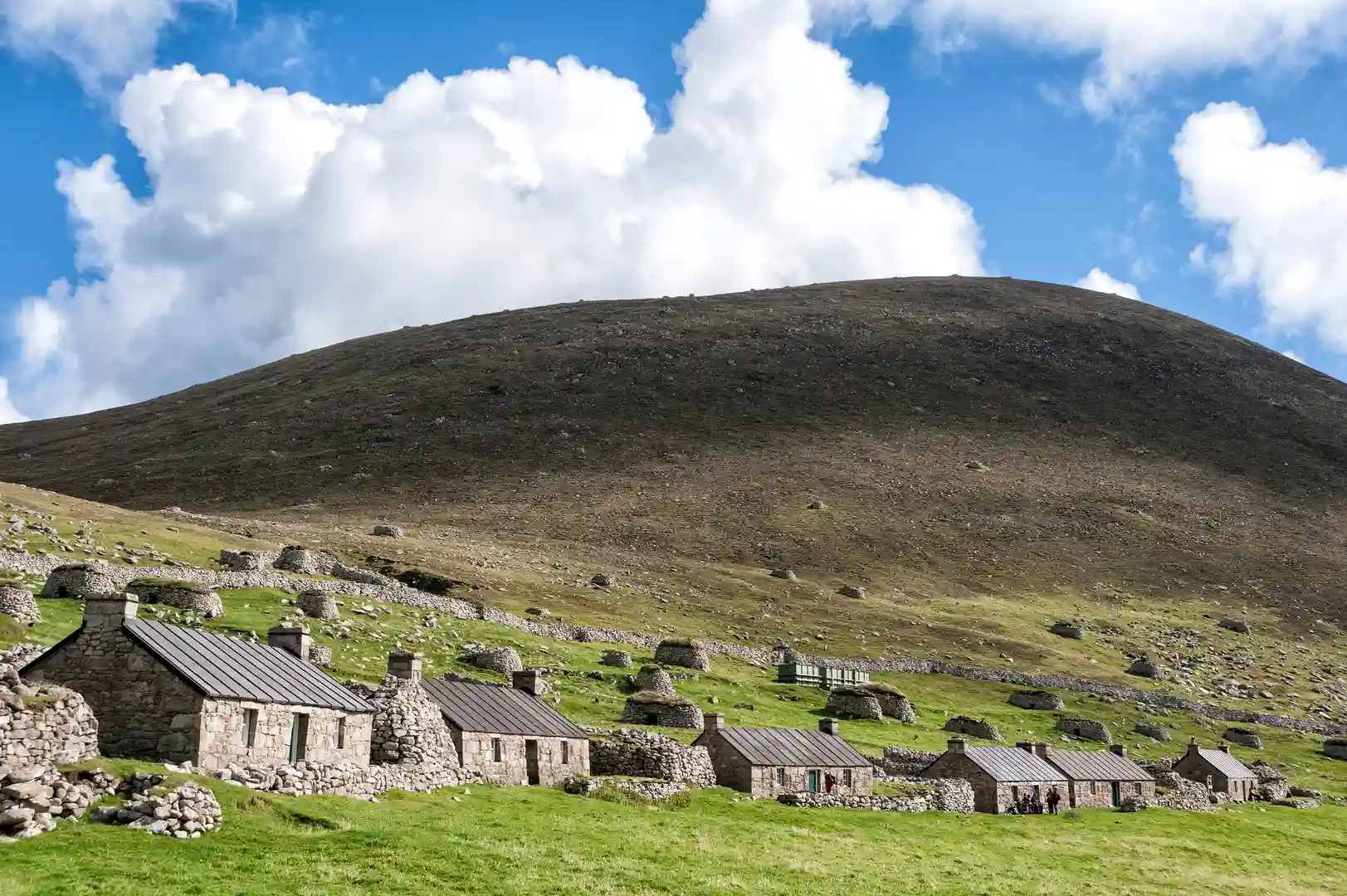

Where seabirds outnumber people, cliffs rise from the ocean, and silence defines the edge of Europe.
St Kilda lies 40 miles west of the Outer Hebrides — a cluster of volcanic islands shaped by wind, sea, and solitude. Once home to a small Gaelic-speaking community, the archipelago was abandoned in 1930, leaving behind stone houses and stories of resilience in one of the world’s most remote settlements. Today, it’s a UNESCO World Heritage Site recognised for both its natural and cultural importance — a place where nature reclaims the past and the wild Atlantic commands every horizon.
For adventurous travellers, visiting St Kilda is a journey into another world. Though overnight stays are rare, day trips by boat from Harris or Skye offer a glimpse of soaring cliffs, ancient village remains, and vast seabird colonies — puffins, gannets, and fulmars numbering in the hundreds of thousands. Walking here is unlike anywhere else in Scotland: short trails wind across Hirta, the main island, revealing views that feel both humbling and timeless.
County / Region: Outer Hebrides (Western Isles)
Yes — by organised boat tours from Harris or Skye, usually between May and September, weather permitting.
Yes, it lies about 40 miles west of the Outer Hebrides but is administratively part of the Western Isles council area.
Public overnight stays are very limited, but a small number of researchers, conservationists, and volunteer work parties are based there seasonally.
It’s recognised for its outstanding natural environment — sea cliffs, birdlife, and marine ecosystems — as well as its preserved cultural heritage from centuries of human settlement.
Yes, though walks are short and weather-dependent. Expect steep terrain, high winds, and unforgettable Atlantic views.